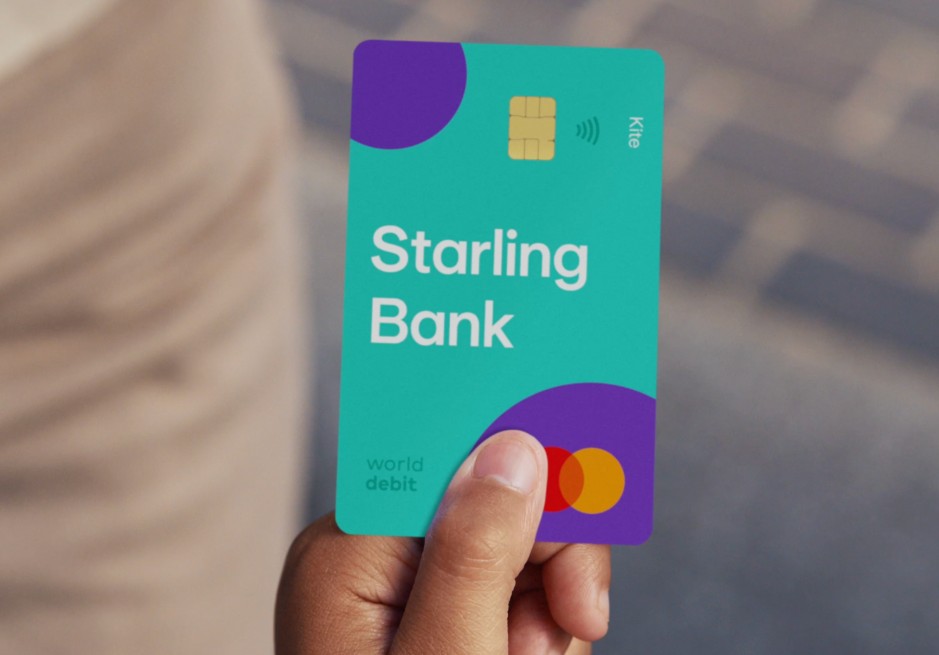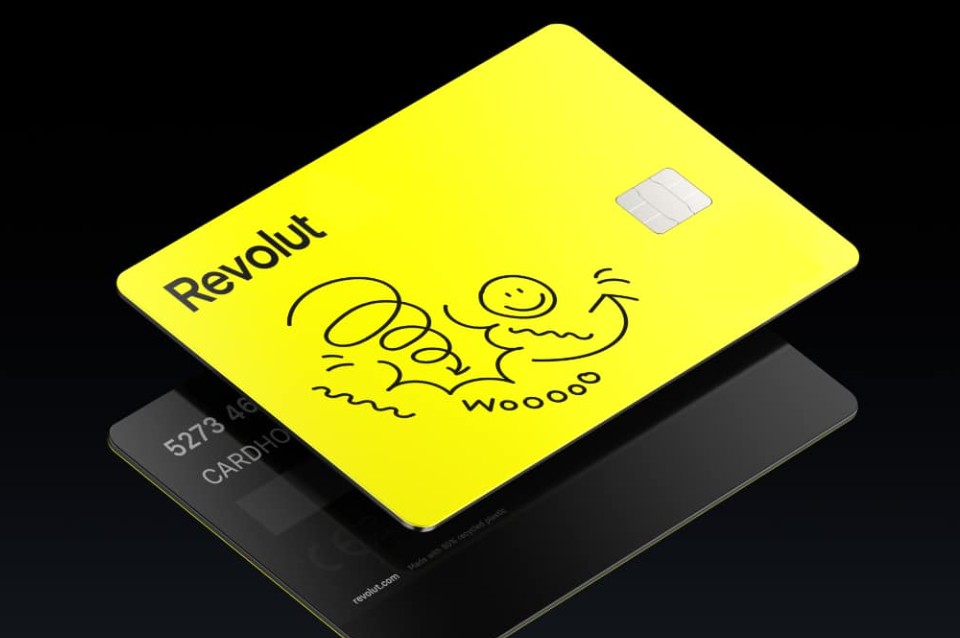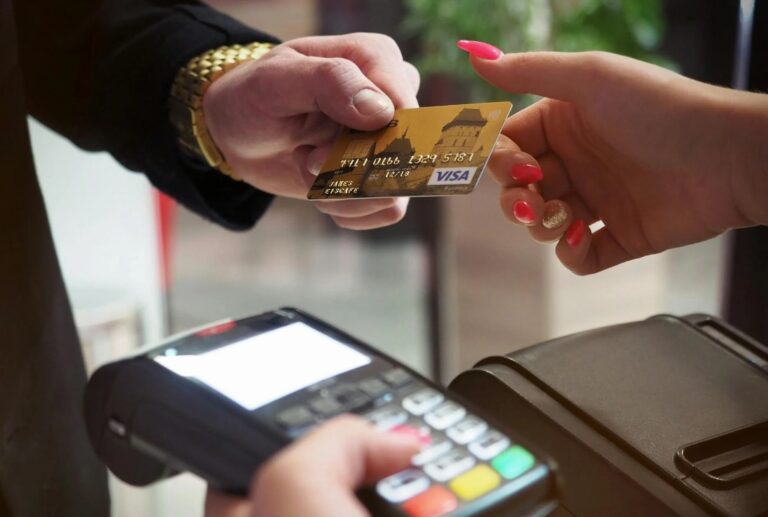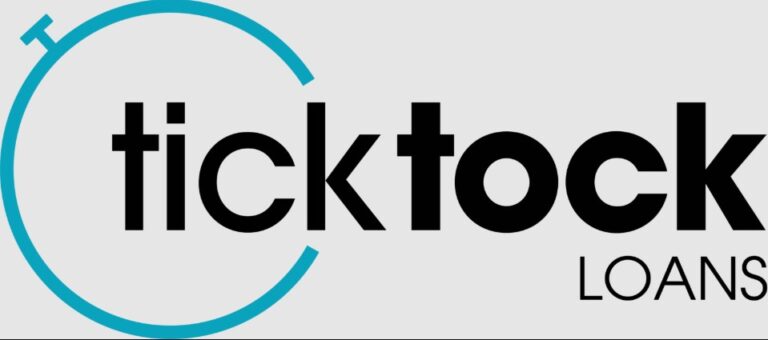Free Child Bank Account With Debit Card In UK For Kids Under 18s
Last Updated on
A Parent’s Guide to Opening a Free Child Bank Account with Debit Card in the UK For Kids Under 18
Opening a bank account for your child can be one of the most rewarding steps towards teaching financial responsibility. Not only does it provide them with a safe place to store their savings, but it also introduces them to important life skills like budgeting, spending wisely, and saving for the future. Here’s everything you need to know to open a free child bank account with a debit card in the UK.
Why Should You Open a Free Child Bank Account with a Debit Card?
What are the Benefits for Your Child?
By opening a child bank account with a debit card, you’re setting your child up for future financial success. Some of the key benefits include:
- Financial independence: Your child can start managing their own money under your supervision, learning to make decisions on spending and saving.
- Learning how to budget and save: With a debit card and bank account, your child can better understand how to allocate their money between spending and saving.
- Controlled spending limits: Most child bank accounts come with daily limits, ensuring that spending stays in check.
- Security over cash: Instead of carrying cash, which can be lost, a debit card is a safer way to store and access money.
Why is a Free Child Account Important?
Bank fees can eat away at savings, especially for children who typically deal with small amounts of money. A free child bank account means there are no monthly fees or transaction charges, allowing every penny to go towards their savings. Many free accounts also offer free online banking and mobile apps, helping both children and parents monitor finances more effectively.
What to Look for in a Kids Bank Account with a Debit Card?
What Features Should You Prioritize in Kids Bank Account?
When selecting a free child bank account with a debit card, there are several important features to consider:
- Debit card availability and usage limits: Ensure the account offers a debit card that can be used both in-store and online. Look at daily limits to prevent overspending.
- Mobile app and online banking access: Both you and your child should be able to monitor spending and balances easily.
- Parental control features: Many banks offer controls that allow you to set spending limits or receive alerts when the card is used.
- Fees and charges (if any): Confirm that the account is truly free, with no hidden costs.
- Interest rates on savings: Some accounts also offer interest on the child’s savings, encouraging them to save more.
Are There Any Age Restrictions For Child Bank Account?

In the UK, most banks set a minimum age for children to open their own bank account. Typically:
- Junior accounts: Available for children as young as 7 or 11 years old, depending on the bank.
- Teen accounts: For children aged 13-17, these often come with more flexible spending limits and additional features like mobile banking.
How to Open a Free Child Bank Account with a Debit Card?
What Documents Do You Need For Kids Bank Account?
To open a child’s bank account, you’ll need to provide certain documents to verify both your and your child’s identity. These typically include:
- Proof of identity: A passport or birth certificate for your child and a valid ID for the parent (such as a passport or driver’s license).
- Proof of address: Utility bills or bank statements to confirm your address.
- Other verification details: Some banks may require your National Insurance number or other personal details.
Can You Open Child Bank Account in Online or In-Branch?
Many UK banks allow you to open a child bank account either online or in-branch. If you choose to go online, most banks have a streamlined process that involves filling out an application form and uploading the necessary documents. For in-branch applications, you can simply visit your local bank, where a representative will guide you through the steps.
How to Set Up a Bank Account for a Child In UK?
Setting up a bank account for your child is a straightforward process. Here’s what you need to do:
- Choose the right account: Decide whether a savings account or a current account with a debit card best suits your child’s needs.
- Fill out the application: Provide the necessary documents as mentioned above, and ensure that all forms are filled out correctly.
- Set up online banking: Once the account is approved, help your child set up online or mobile banking, so they can monitor their balance and transactions.

What Age Can a Child Have a Bank Account?
Most banks in the UK allow children as young as 7 or 11 to open a junior account with a debit card. However, for teen accounts, which offer more freedom and fewer restrictions, the age limit is typically 13-17. Once your child turns 18, they’ll be eligible to transition to an adult bank account.
What Do I Need to Open a Bank Account for My Child?
What Documentation is Required for Kids Bank Account?
When opening a bank account for your child, you’ll need to gather the following:
- Proof of ID for you and your child: Such as a passport, birth certificate, or driver’s license.
- Proof of address: A utility bill or council tax bill for your home address.
- Other documents: Some banks may ask for your National Insurance number or additional verification documents.
How to Transfer a Child Trust Fund to a Bank Account?
What is the Process for Transferring a Child Trust Fund?
To transfer your child’s trust fund into a bank account, follow these steps:
- Contact your bank or the Child Trust Fund provider to begin the transfer.
- Complete the necessary paperwork, including providing proof of identity and account details for where the money will be transferred.
Can You Transfer It to Any Bank Account?
Not all bank accounts are eligible to receive a Child Trust Fund transfer. Typically, the funds are transferred to a junior ISA or a specific savings account designed for children.
How Long Does It Take to Transfer a Child Trust Fund into a Bank Account?
How Much Time Should I Expect?
The transfer process can take anywhere from 2 to 6 weeks, depending on the financial institution and any potential verification delays.
Can You Speed Up the Process?
To speed things up, make sure you have all the required documents and information ready before initiating the transfer, and regularly follow up with the bank or fund provider to ensure smooth processing.
How to Change a Child Benefit Bank Account?
What are the Steps to Change the Bank Account for Child Benefits?
To change the account where your child benefits are deposited, follow these steps:
- Log in to your HMRC account online and go to the child benefit section.
- Update your bank account details with the new account information.
- Submit the changes and wait for confirmation.
How Long Does the Update Take?
It typically takes 7-10 working days for the updated account information to be processed, during which time the benefits may still be deposited into your old account.
How to Teach Your Child Financial Responsibility with a Bank Account?
What Lessons Can Your Child Learn from Having a Bank Account?
A bank account teaches children key financial skills, including:
- Budgeting and saving: They can allocate their money towards different goals.
- Tracking expenses: Learning to monitor their spending helps them make informed financial decisions.
- Financial security: They’ll understand the importance of safeguarding their money, especially with a debit card.
How Can You Guide Your Child in Using Their Debit Card Responsibly?
Encourage responsible debit card use by:
- Setting up parental controls to monitor spending.
- Discussing spending goals and helping them set aside money for savings.
Top 10 UK Banks Offering Free Child Accounts with Debit Cards For Kids Under 18
When choosing a free kids bank account with a debit card, it’s important to consider the features that best suit your child’s financial education and independence. Here’s a more detailed exploration of each bank and provider, giving you an in-depth look at their child-friendly offerings.
1. Starling Bank – Starling Kite

Starling Kite is an extension of the popular Starling Bank, known for its digital-first approach to banking. Kite is designed for children aged 6-16 and integrates seamlessly with the parent’s existing Starling Bank account, allowing complete oversight through the app.
- Monthly fee: £2 per month (after a 30-day free trial).
- Key features:
- Children receive their own contactless debit card that can be used for in-store purchases, online shopping, and ATM withdrawals.
- Parents can control spending limits and receive instant notifications whenever their child uses the card.
- The app allows you to freeze the card if it’s lost or stolen and track transactions in real-time.
- Parental controls: Parents have full control over the account via the Starling app, with the ability to set spending limits, block certain transactions, and monitor spending patterns.
Why Starling Kite?
Starling Kite is perfect for tech-savvy families who want a completely digital banking experience. It allows kids to gain independence while giving parents the peace of mind of real-time oversight. The fact that it’s linked directly to the parent’s account makes it incredibly convenient.
2. GoHenry – GoHenry Prepaid Debit Card
GoHenry is one of the most well-known names when it comes to prepaid debit cards for children, offering a comprehensive app that focuses on financial education. It’s designed for children aged 6-18, and the card is loaded with features that help teach money management skills.
- Monthly fee: £3.99 per child.
- Key features:
- GoHenry provides a contactless prepaid debit card that can be used anywhere Visa is accepted.
- The app includes savings goals, where children can set aside money for specific purposes.
- Financial education tools include fun, interactive “Money Missions” that teach kids about budgeting, saving, and responsible spending.
- Parental controls: Parents can set spending limits, block certain transactions, and receive instant notifications when the card is used. You can also schedule regular transfers of pocket money or manually add funds.
Why GoHenry?
GoHenry is ideal for parents who want their children to learn about money management in an interactive and educational way. The “Money Missions” add an extra layer of financial learning, making it more than just a debit card—it’s a complete financial education tool.
3. Nimbl – Nimbl Prepaid Debit Card
Nimbl is a prepaid debit card and app aimed at children aged 6-18, focusing on building good financial habits through hands-on experience. It’s a simpler, more budget-friendly alternative to GoHenry, but still offers robust features for both kids and parents.
- Monthly fee: £2.49 per month or £28 annually.
- Key features:
- The prepaid debit card allows for contactless payments and ATM withdrawals.
- The Nimbl app supports savings goals where children can allocate money towards specific items or experiences.
- Children can also view spending summaries to help them track their financial habits.
- Parental controls: The app allows parents to set spending limits, receive instant alerts, and freeze the card if needed. Parents can top up the card manually or schedule regular pocket money payments.
Why Nimbl?
Nimbl is a great option for parents who want to teach their children financial responsibility without the higher monthly fees of GoHenry. Its savings goals feature encourages kids to budget for the things they want, and the spending alerts give parents peace of mind.
4. Osper – Osper Prepaid Debit Card
Osper is a prepaid debit card designed for children and teens aged 8-18. It’s all about giving children the freedom to manage their own money while parents retain control through the app.
- Monthly fee: £2.50 per month or £24 annually.
- Key features:
- The Osper debit card allows children to make contactless payments and ATM withdrawals.
- Osper has a straightforward app where children can track their spending and set up savings pots.
- Parents can instantly add funds to the card through the app and monitor their child’s spending.
- Parental controls: Parents can set spending limits, restrict certain types of transactions, and receive spending notifications. The ability to freeze or unfreeze the card at any time is a helpful safety feature.
Why Osper?
Osper is ideal for families who want a no-frills, easy-to-use debit card for kids that still offers essential features like parental controls and spending alerts. It’s a cost-effective option for teaching money management.
5. Revolut – Revolut <18

Revolut <18 is the child and teen account offered by Revolut, designed for kids aged 6-17. It’s integrated with the parent’s Revolut account, allowing seamless transfers and complete control over the child’s finances.
- Monthly fee: Free (for standard Revolut users).
- Key features:
- Contactless debit card that works for in-store purchases, online transactions, and ATM withdrawals.
- Children can set up savings goals and track their spending through the Revolut <18 app.
- Revolut also offers custom card designs, which appeal to younger users.
- Parental controls: Parents can transfer money instantly and monitor transactions through their own Revolut app. You can also freeze and unfreeze the card if necessary and set spending limits.
Why Revolut <18?
Revolut <18 is a great choice for families already using Revolut. The fact that it’s free makes it highly attractive, and its international usability is perfect for families who travel frequently.
6. NatWest – NatWest Adapt Account
The NatWest Adapt Account is a current account designed for children aged 11-18. It comes with a debit card and offers full access to online banking and the NatWest mobile app, making it more similar to an adult current account than a prepaid option.
- Monthly fee: Free.
- Key features:
- The NatWest Visa debit card can be used for in-store, online purchases, and ATM withdrawals.
- Children can access their account through online banking and the NatWest mobile app, allowing them to track their spending, check balances, and make payments.
- No monthly fees and no minimum balance requirements.
- Parental controls: While there are no dedicated parental controls within the NatWest app, parents can help manage the account alongside their child. Statements and spending habits can be reviewed regularly.
Why NatWest Adapt?
NatWest Adapt is an excellent option for older children and teens who are ready for a more grown-up banking experience. It’s completely free, and while parental controls aren’t as strict as with prepaid cards, the mobile app helps teens manage their money responsibly.
7. HyperJar – HyperJar Kids Card
HyperJar is a prepaid debit card for children aged 6-17, designed to help kids learn about budgeting and saving. It’s completely free to use and provides a unique approach to money management through jars.
- Monthly fee: Free.
- Key features:
- Parents can create different “jars” for budgeting and assign spending money accordingly.
- The prepaid card can be used for in-store, online purchases, and contactless payments.
- Kids can see their jars, helping them understand the importance of saving and budgeting for specific goals.
- Parental controls: Parents control the allocation of money to different jars and can oversee all transactions. HyperJar’s system encourages collaborative money management between parent and child.
Why HyperJar?
HyperJar is ideal for parents who want to teach their kids about budgeting in a practical way. The free-to-use model makes it appealing for families who don’t want to deal with monthly fees, and the jars system offers a fun way for kids to manage their money.
8. Barclays – Barclays Children’s Account
The Barclays Children’s Account is designed for children aged 11-15 and provides them with a contactless debit card and full access to online and mobile banking.
- Monthly fee: Free.
- Key features:
- The Visa debit card allows children to make contactless payments, shop online, and withdraw money from ATMs.
- Children can access their account through online and mobile banking, helping them track their spending and balance.
- Parents can assist their children in managing the account, although there are limited parental controls.
- Parental controls: While Barclays doesn’t offer comprehensive parental controls for this account, parents can guide their children in reviewing statements and understanding their spending habits.
Why Barclays Children’s Account?
This account is best for children who are ready for more financial independence. It provides all the benefits of a regular current account but with the oversight of a parent.
9. Nationwide – FlexOne Account
Nationwide’s FlexOne account is a free current account for young people aged 11-17. It’s designed to help teenagers take their first steps in banking, with features typically found in adult accounts.
- Monthly fee: Free.
- Key features:
- The Visa debit card allows for contactless payments, online shopping, and ATM withdrawals.
- The FlexOne account offers interest on balances over £1, encouraging saving.
- Full access to Nationwide’s mobile and online banking services, giving teenagers the tools to manage their money independently.
- Parental controls: While there are no specific parental controls, parents can help monitor the account alongside their child.
Why Nationwide FlexOne?
The FlexOne account is ideal for older teens who want a full current account experience with no fees and the potential to earn interest on savings. It’s a strong option for building financial independence while still offering parental oversight when needed.
10. Lloyds Bank – Lloyds Under 19s Account
The Lloyds Under 19s Account is a free current account for children aged 11-17. It offers a Visa debit card and access to online banking, making it similar to a standard adult account but with age-appropriate features.
- Monthly fee: Free.
- Key features:
- The contactless debit card allows for in-store, online purchases, and ATM withdrawals.
- Lloyds offers interest on balances over £1, which encourages saving.
- Full access to online and mobile banking, helping teens track their spending, set savings goals, and manage their finances.
- Parental controls: Like Nationwide’s FlexOne, there are no dedicated parental controls, but parents can easily help manage the account with their child.
Why Lloyds Under 19s Account?
This account is ideal for teens who want more financial freedom and the ability to manage their money just like an adult account. The ability to earn interest on savings makes it a great option for encouraging long-term financial habits.
FAQs About Child Bank Accounts with Debit Cards
Can Children Get a Contactless Debit Card?
Yes, many UK banks offer contactless debit cards for children, usually from age 11 or older.
How Safe is a Child’s Debit Card?
A child’s debit card is generally safe, with spending limits, parental controls, and notifications for transactions.
Can I Limit How My Child Uses Their Debit Card?
Yes, most banks offer parental controls that allow you to set spending limits and receive alerts when the card is used.
What Happens When My Child Turns 18?
Once your child turns 18, their junior account will typically transition into an adult account, with new features and fewer restrictions.
Conclusion about Free Child Bank Accounts With Debit Card in UK
Opening a free child bank account with a debit card in the UK is a fantastic way to introduce your child to financial responsibility. By selecting the right account and guiding them through the use of their debit card, you’re setting them up for long-term success. Whether it’s helping them transfer their Child Trust Fund or understanding the basics of budgeting, a bank account can be an invaluable tool in your child’s financial journey.







